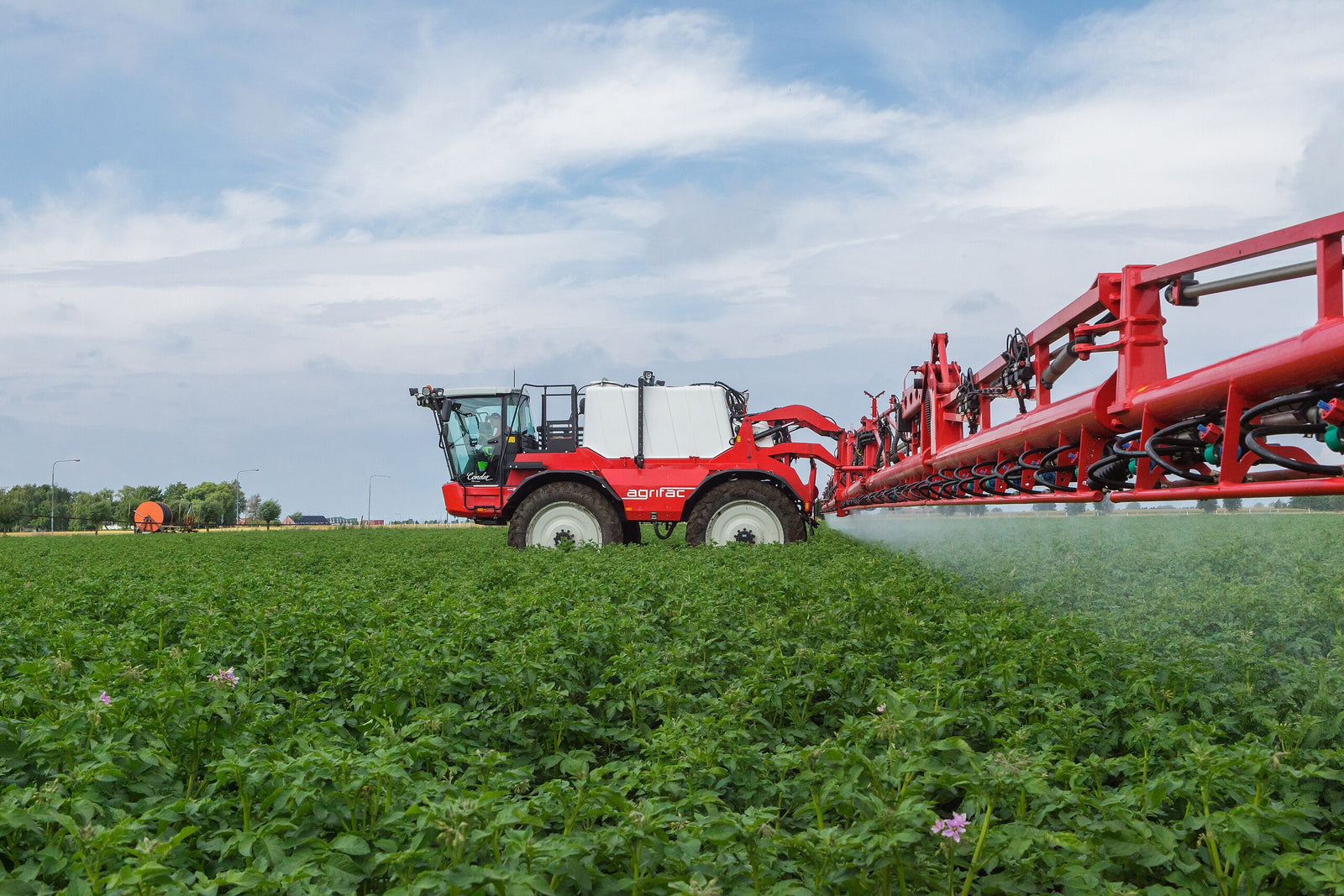A vehicle used to spray pesticides at the scale required by industrial ag looks like a combination of a tractor, a truck, and a crane. It sits on narrow, tall wheels, designed to lift it over a growing corn or soy field, with a big plastic tank directly behind the cab. When it’s time to start spraying, it unfurls immensely long booms, which give it the appearance of a tightrope walker holding a balance pole.
There’s something both comical and ominous about watching such a sprayer making its rushed passes over a growing crop, the wobbling hundred-foot spread of its arms exaggerating each bump and divot even as they disperse a thick mist of roundup over acre after acre. Like all farm equipment, the function dictates the form, with appearances of negligible concern. Counterintuitive though it may be, there is now a tightening link between these machines and regenerative agriculture, even though the first farmers to use the term ‘regenerative’ were grasping for a way to distinguish their practices from the world of big machines and monocultures.
The original idea was that by working with the natural inclinations of plants and animals farming might be brought more in line with the full range of human interests, from healthy food and thriving farming communities to reduced pesticide use and better treatment of livestock, while also actually improving the health of the larger ecosystem and especially the soil. This is as romantic as it sounds, and anyone who claimed it would be possible to rapidly return the entire agricultural system to a patchwork of diversified family farms was somewhere between hopelessly optimistic and delusional. Yet the critique inherent to the regenerative label was also — and this is important! — substantially correct. A healthy food system should not rest on millions of acres of corn and soy monocultures.
But from the first there was also a more pragmatic, even cynical undertone to regenerative farming. Because it had no strict definition, let alone an overseeing body, it could be everything to everyone. It allowed farmers to both legitimately highlight the exceptional practices they employed, but it also allowed them to imply that their products were somehow purer than those with more mainstream labels claims like organic.
Like so many such terms, regenerative farming has always been about marketing, about suggesting to the eating public that food can be produced in a way that approaches a bucolic ideal of green fields and languorously grazing cows, of rich soil tended by good farmers. There’s nothing inherently wrong with this; I speak from experience when I say it can be devilishly hard to find a word or two capable of explaining what separates a farm like mine from industrial agriculture.
But one reason for the difficulty is that the big food companies, with their giant advertising budgets, are incredibly good at coopting any term that acquires a positive connotation, and so it should be no surprise that regenerative farming has now been taken over. Instead of describing a whole suite of practices and set of values, ‘regenerative’ has become a euphemism for practices that notionally increase soil carbon, one General Mills and other multinational food companies are eager to advertise. And this brings us back to those long-armed pesticide sprayers.
One component of regenerative farming has always been a focus on reducing tillage. That is, trying to plow as little as possible. The reason for this is that plowing disrupts soil structure, which increases erosion and diminishes organic matter. But read this excellent article in Civil Eats on the link between chemical companies, carbon markets, and claims of regenerative farming, and you see that ‘regenerative’ has more or less become a synonym for eliminating tillage by means of heavy pesticide use. In short, rather than controlling weeds with a plow, they are controlled with sprays, and the result is called proudly call regenerative farming.
There’s something here that has broader implications, something having to do with the way words and ideas map imperfectly onto the world, which I will get into in next week’s post. For now I simply hope I’ve convinced you to be skeptical of the claims on a box of cereal.


3 comments
Unfortunately this mean people need to actually give a shit about how their food is produced. We know “natural” is not a designation, we know “cage free” does not mean the same as “free range.” The issue is people, in general, don’t give a shit in the US about how their food is produced. Food laden with chemicals and people are still ignorant as to why they are developing chronic illnesses. Permaculture is a multidisciplinary practice that needs designation. “Regenerative agriculture” can easily be coopted and clearly has been. Most are none the wiser, lacking critical thinking and a care in the world.
Thank you for explaining the term “regenerative farming”
CB
I am so appreciative of the education you give us in this world of sound bites. It’s excruciating to see that we as humans can’t seem to wrap our minds, hearts and actions around protecting and providing for our earth now and for the future. Thank you for being a farm that works hard at this!